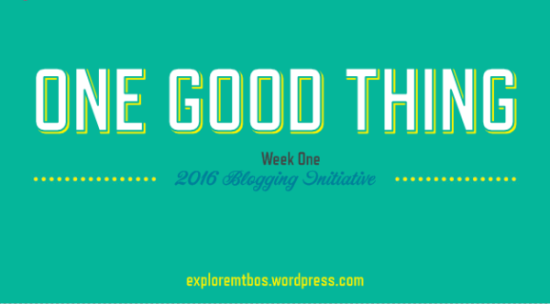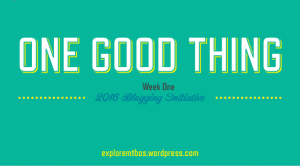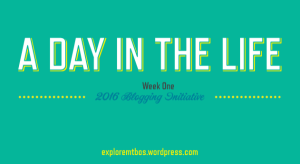Man. Time FLIES!
I feel like it was just yesterday when I made a commitment to myself to do a “Week In Review” series that summarized what I had been up to in the classroom each week. I had all the momentum on my side up until week 6, but then I was off to Norway for the NORCAN Project for over a week. Talk about falling off the wagon hard!
Then, we hit the busy “before Christmas Break” stretch. I spent a much enjoyed chunk of time with my family over the holidays, but next thing you know and we’re at the end of our first semester with the EQAO Assessment of Mathematics standardized test wrapping things up. Can’t believe it.
If that isn’t enough, I’m just now finally getting around to posting my first blog post for the 2016 #MTBoS Blogging Initiative when I should already be wrapping up my second. Yikes!
Well, enough excuses. Let’s get to it!
In the first blogging challenge, we were able to pick between two options:
I’ve decided to talk about One Good Thing.
My One Good Thing
I picked the first option because it is so easy to focus on one or two negative experiences through each day and completely miss all of the positive we could be enjoying instead. This is especially true for me at this time of year when I’m completely exhausted physically and mentally as I try to “fix” mathematics education with another group of students. Many who know me are well aware of my passion (addiction) to creating math tasks, trying new ideas and sharing innovative strategies for use in the math classroom. However, only a handful of people know how I get when I haven’t reached every learner in my classroom. My wife knows when it is EQAO time because I get extremely down on myself when I haven’t found a way to inspire a student to want to maximize their potential in math class. I think all teachers feel this same sense of disappointment. But for me, I struggle letting it go. As one who constantly promotes the idea of learning from failure and celebrating that experience, I seem to be the one who needs the advice most.
I know what you’re thinking: “I thought this was supposed to be One GOOD Thing?”
Don’t worry. It is.
For the first time in my 10 year teaching career, I feel like I have finally identified that this negativity is a problem and I am working to confront it as such.
In order to use my own advice and learn from failure, I spent a lot of time over the past couple of weeks thinking about some of the good things that happened this semester as well as some of the things I’d like to improve. I could probably write a book about all of the tweaks, modifications and complete revamps I would like to make as I prepare to enter second semester, I think my One Good Thing could be summed up in one word: balance.
Everything in this universe comes down to balance and I don’t think learning (or teaching) mathematics is any different. These past few years I have really been stretching my thinking beyond direct instruction and a largely lecture-style approach. While my assessment would say that my students and I both enjoy math class much more, I also think that it is easy to shift too far to one side. For the first 8 years of my career, I was of the belief that direct instruction was best. After some great learning at conferences, these past two years managed to shift my beliefs to include inquiry/discovery learning. However, my attempts to get better at teaching with an inquiry/discovery approach has led me to almost banish direct instruction from my classroom completely. It wasn’t something I intended to do, but it happened. However, there is a place for both direct instruction and inquiry based learning and I realize this is an area I need to work on.
One of the most challenging questions we as math teachers get to wrestle with is when to use each approach for the greatest effect on learning. After much thought in this area, I believe that there is no right answer.
For example, let us compare mathematics to medical testing. This research lab that does DNA testing in Wichita diagnoses the blood samples first to determine whether the person’s condition is hereditary or not. And, after many tests, they will be able to declare the nature of the condition. When compared to maths, both take the same approach. That is, in order to arrive at a solution, it is necessary to explore as many different approaches as possible.
In my case, this shift in thinking has made me try to envision a math classroom where I hope to better combine the use of the inquiry process when introducing a topic and direct instruction when consolidating a topic.
I’m excited to dive in and share how things go by the end of next semester.
I just hope someone is nice enough to remind me of what I always say about failure.
WANT TO LEARN HOW TO TEACH THROUGH TASK?

Share With Your Learning Community:

About Kyle Pearce
I’m Kyle Pearce and I am a former high school math teacher. I’m now the K-12 Mathematics Consultant with the Greater Essex County District School Board, where I uncover creative ways to spark curiosity and fuel sense making in mathematics. Read more.
Read More From The Blog



